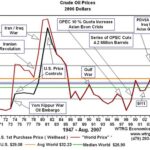Holiday shopping is underway, giving retailers the opportunity to maximize consumer spending.
The buoyancy of the season isn’t lifting every boat.
The recent earnings reports show a growing gap between retailers like Walmart, Abercrombie & Fitch, and those who underperform such as Target or Kohl’s.
CNBC reported that the disparity highlights retailers’ challenges as shoppers, who are burdened with two years of rising prices and inflation, continue to be selective about their purchases.
Neil Saunders is the managing director of GlobalData Retail. He says, “People still spend, but perhaps they don’t have quite as much money to spend.” The environment is forcing consumers to avoid weaker retailers.
Spending on holidays is expected to be modest.
National Retail Federation predicts that holiday spending is expected to increase by between 2.5% and 3.5%, or $979.5-$989 billion.
The growth rate is lower than the 3.9% of the year before, but still higher than the $955.6 Billion in the prior year.
The forecasts of retailers for this season are very different.
Abercrombie & Fitch, Dick’s Sporting Goods and other companies raised their outlooks for the full year after strong third quarter results.
Scott Lipesky is Abercrombie’s Chief Operating officer. He noted that “we’ve already seen an excellent response for our holiday collections.”
Nordstrom and Walmart, on the other hand, remain wary.
Walmart’s CFO John David Rainey said that holiday sales were off to a good start, but emphasized the continued hesitancy of consumers.
Walmart still showed promising results, as general merchandise sales grew for the second quarter in a row after an 11-quarter drop.
Target and Kohl’s have delivered disappointing projections.
Target anticipates no change in comparable sales during the quarter. Kohl’s, however, expects to see a decline that is deeper than expected, as a result of a new CEO taking over the company just before the crucial holiday shopping season.
Value and relevance are the focus of retail strategies
To attract consumers, retailers are using aggressive tactics.
Target’s Black Friday strategy is based on offering exclusives, such as merchandise inspired by Universal’s Wicked film and Taylor Swift limited edition collectibles.
Target has also slashed the prices of 2,000 more items to coincide with the holiday season.
Saunders cautions, however, that retail giants like Target and Kohls are facing challenges because they rely heavily on their product mix being based more on “wants”, rather than “needs.”
This year, buyers are more interested in practical and quality gifts than novelty ones.
Saunders stated that people want gifts to be relevant and useful, and are moving away from meaningless items like novelty socks or games.
Stock missteps can spell disaster
Management of inventory is a crucial factor.
If retailers overstock products or make mistakes about consumer tastes, they may face steep price reductions in the aftermath of Christmas.
Kohl’s has, for instance, heavily stocked apparel and small appliances ahead of Black Friday.
Saunders said that if there is not enough foot traffic these items could end up in clearance racks.
Marshal Cohen is the chief retail advisor for Circana. He said that customers are looking to get “the most bang for their buck” and prioritize both quality and affordability.
The pressure to meet the expectations of shoppers is increased by this focus.
Underperforming retailers are blamed for their poor performance
Some retailers have already begun to prepare for possible shortages as the holiday season approaches.
Cohen has noticed a pattern. Retailers often blame external factors, such as weather conditions or problems with the supply chain to explain their poor results.
He said that “every year retailers position themselves so they can have an excuse for not making their targets.”
It’s like they are hedging against the challenges that lie ahead.
The holiday season did not boost sales for all retailers. This post may change as the updates unfold.
This site is for entertainment only. Click here to read more






